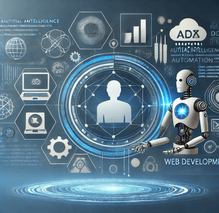The Future of Web Development
Stay ahead of the curve with the latest trends that will shape websites and applications in 2024, in...

Empowering businesses with cutting-edge web solutions, data-driven digital marketing, intuitive mobile apps, and stunning visuals. Let’s craft your success story with technology that makes an impact.



At Lewal Technologies, we specialize in crafting intelligent digital solutions that drive business success. From advanced web development and AI-powered applications to data-driven digital marketing, we help businesses stay ahead in a fast-evolving digital landscape. Our expertise spans across scalable software, automation, and digital transformation.

We develop future-ready solutions using AI, automation, and advanced web & mobile technologies to help businesses enhance efficiency and achieve digital excellence.
Learn More
Our customer-centric approach, industry expertise, and commitment to innovation ensure scalable and high-performance digital solutions that accelerate business growth.
Discover More
Clients Active

At Lewal Technologies, we bring advanced technology and innovative solutions to propel your business forward. Our expert services are designed to strengthen your brand, accelerate growth, and help you achieve continuous advancement in your industry.
Build a strong, recognizable brand identity that resonates with your audience.
Achieve scalable growth using cutting-edge technology and innovative strategies.
Stay ahead of the competition with advanced technology solutions tailored for your business.
Innovative solutions that are sustainable and future-proof, ensuring long-term success.

Finished Project
Happy Clients
Skilled Experts
Hours of Expertise


Identify and choose the ideal project that aligns with your vision and business goals. This is the foundation of all our efforts.
Thorough analysis of project requirements, challenges, and objectives. We ensure every detail is accounted for to set the stage for successful execution.
Develop a detailed action plan, followed by seamless execution. We ensure quality and timelines are adhered to every step of the way.
Complete delivery of the project, ensuring that all objectives and expectations are met. We also provide support to ensure sustained success.





